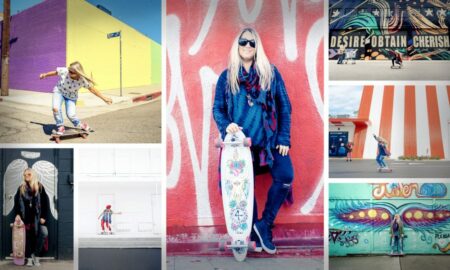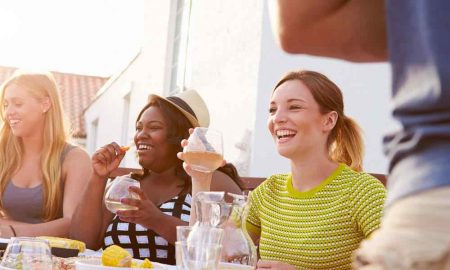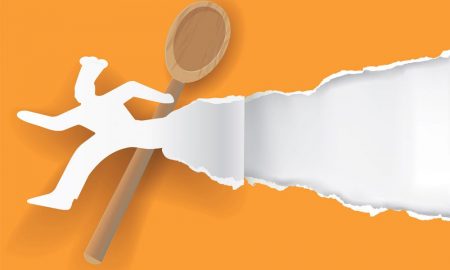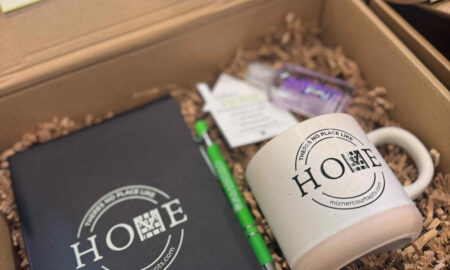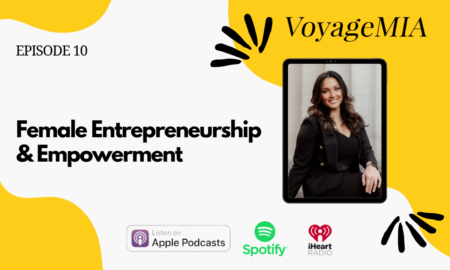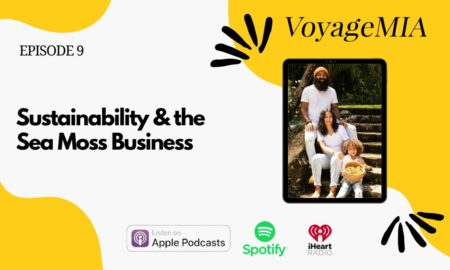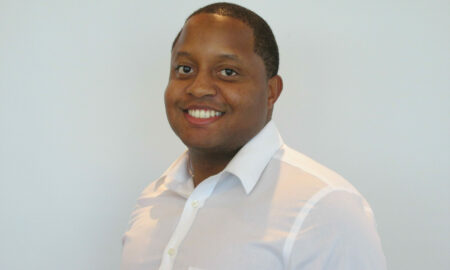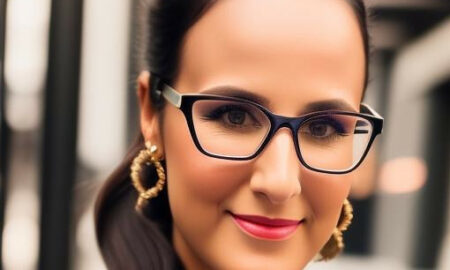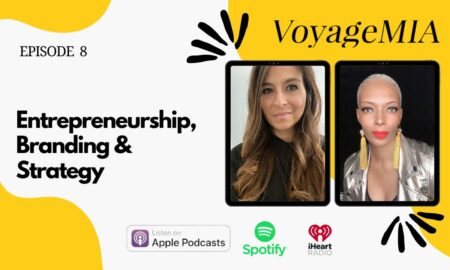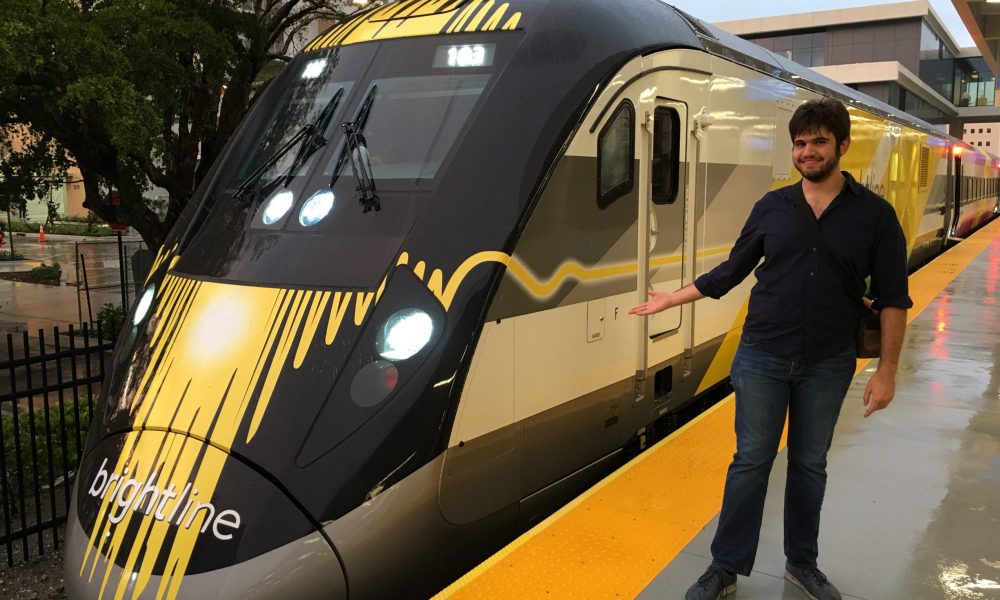

Today we’d like to introduce you to Tolga Erbora.
Hi Tolga, so excited to have you with us today. What can you tell us about your story?
I’ve held my hobbies since I was a very young kid. One of them is an affinity for trains and train watching, and the other is making miniature models. I used to, like most of my ilk then, play around with Erector/Erector Jr., LEGO, K’Nex, etc. There were some model train kits here and there I played with, but it was often rendered too delicate. I can argue some of my train passions started by simply being around them in the late 1990s into early 2000s, when they had a larger presence in the South Florida area. The momentum for kit building, at least on the artistic side, took shape when in elementary school, I would not only enjoy art class but live for “free time” where I could draw sketches. Many of these would be cityscapes, train drawings, and the like. This balanced out an edge I had in STEM, particularly in Mathematics. I wouldn’t shy away from using the, at the time dial-up, internet to browse information about these subjects as well as train watching and railroad photos. I discovered several communities to which the online world would come to connect me.
The GFLUG, since 2002, where I got to attend the first display in 2003. I became a member in 2008. I’ll note, the only obstacle to this side of the hobby is distance. Bring in a whole network of similar hobbyists, found on YouTube! The video platform was favored for the major purpose of sharing and communicating through video, but also the minor side purposes of commenting and messaging. I took up a Flickr account to share the stills before adding Instagram. Early social media was really a major contributor to my leisure time, as I was able to grow my circles beyond those had at grade school. I’d start contributing to these networks with images and videos of my model structures and model trains built with LEGO bricks or in HO (1:87) Scale and of real trains and planes. Aside from the passion in sharing the craft, a passion for capturing the moments in these transportation scenes developed. It instantly became all about documentation, documentation, documentation, and that holds today. I’ve come to learn with the railroad comes rich history and a mental puzzle game with the economics. I’ve come to love history, thanks to my high school history teacher.
I moved into the university world in 2013, starting with Florida Int’l University in search of a degree in Mathematics, which eventually morphed into a physics degree. A Study Abroad Trip I did with a famous professor in 2017 to Italy was a true breakout in bringing out my thirst to explore and seize the day. It also brought out the will to analyze everything I come across. Analyze the why and how, rather than the what- yet also create. I graduated to continue with FIU for a Ph. D in physics, thanks to the compelling research opportunities and the unending convenience… of everything. Several folks crucified me for my choice of staying here as opposed to attending another university for the degree. I just couldn’t leave behind my friends and family down here in Miami, and the university had plenty to offer as far as research. Including joining a collaboration based at a national lab in Virginia and traveling to and from there… so I’ve moved out without moving out.
My mission during graduate studies is to make the most out of it on all facets. I am grateful for all the friendships I’ve developed especially over the past few years. If I have to make recommendations to fellow graduate students that feel that they are in for a not so thrilling ride, I say this: Have fun doing the work, and have fun balancing the work. Be a good (insert field here) that can COMMUNICATE. My field is infamously introverted. Without hesitation, I’ve gotten involved with the Communications in Science network FIU, UM, NOVA, etc are organizing. Steps like this have helped me bring more relevance to my field; I’ve even sought to apply some pointers to my creative side as well. I’ve also applied these techniques towards the physics labs I’ve taught. Time to time I will depict a real world or relatable example in a way that will allow those I work with to engage with whatever it is that they are learning. Injecting such creativity to my career as a physicist is healthy and valuable towards my quality of life. But as a creative, I say this. Don’t only seize the day capturing the status quo, or what you think is the status quo. Capture the cutting edge, and break something new through. Don’t shy away from examining the why and the how, and definitely work towards telling a strong story.
Would you say it’s been a smooth road, and if not what are some of the biggest challenges you’ve faced along the way?
There were certainly some roadblocks that I’ve encountered. Growing up, my friend circles were not really that large at school. Aside from a few personal faults, It could be primarily because my STEM edge was intimidating. My hobbies, particularly the LEGO building, seemed to come off as absurd, perhaps childish to some. I’ll also admit I’ve been timid, and perhaps not the best communicator. If I went back in time realizing these, I could have fared better with my peers and enjoyed my younger years a little more. Professionally, I had to grow into enjoying my research. Starting as an undergraduate, the material was rather overwhelming. It was seen as cool and interesting at first, but how cool? The inevitable imposter syndrome came, this is where you feel what you do doesn’t nearly match up to your research peers’ work.
It took a couple years to explore the field and be sure that I wanted to continue down the path that I am going, but that assurance came over time. I still find struggle in communicating science research. Particle physics is NOT an easy sell. The SciComm experts admit it. In the hobby world, the largest struggle I’ve had is not so much with photographing and videographing trains itself, where everyone, myself included, runs into bugs here and there, but with displaying and exhibiting my models. I imagine the number of LEGO enthusiasts in the area are growing, as are evidently the number of railfans, planespotters, model railroaders, etc. As with any field of interest. But the thing is, there is not much organization I can name in the South Florida area. I have taken on a regional role within GFLUG, which is the largest Recognized LEGO Users Group in Florida. Unfortunately I still am the only member from Southeast Florida, despite what I feel is an already adequate presence online for the club.
We can meet fellow hobbyists the old fashioned way, in person in public, but let’s segue into the next point. Part of it could be my timidity striking back, and me not finding the right contacts/venues and vying for large local displays. But I have conflicting priorities, and university life wears me down! Representing RLUGs like GFLUG takes work and comprises more than just fun and games, it involves logistics, planning, coordination, setup, manpower, and teardown. The intense amount of resources to do a solo display is why I primarily go to places like Tampa once or twice a year, when convenient (holidays and breaks essentially) and join along with a bigger group display (more members, less work done per member). I hate to say it, but sometimes going solo down here simply is not worth it. It is unfortunate because I’ve come up with these buildings and structures as a fun activity, but they hardly get any air time at all. Space becomes an issue when wanting to install a city layout at home. Now, for the more general model making case, where we factor in the HO Scale trains, you can add time and money to the list. HO scale modeling is costly, only so much can be done, and time consuming for me to want to achieve a sufficient level of detail on my projects. For instance, to detail a single rail car all the way, full works, factoring in my work schedule, I look at about a week per car. Layouts handle 100-200 cars, so imagine spending years to get to your entire roster… But hey, it’s supposed to be fun at the end of the day… and I enjoy what I get done. It’s all that matters.
Thanks for sharing that. So, maybe next you can tell us a bit more about your work?
As a creative, I work to balance my challenging yet exhausting graduate studies in particle physics with two hobbies – model trains and train photography. I particularly enjoy blending these largely personal and individualistic activities with a sense of community, while providing overall context for what I capture as well as inspiration to my audience. You can find me at @TolgaEastCoast. The main deliverable for my work is my YouTube, Flickr, and Instagram content. I primarily, and avidly tell the stories of railroading from South Florida and beyond over time, with hints of analysis of how the railroads operate. I translate a lot of what I see in real life to recreations in model form, be it in HO Scale (1:87) or LEGO brick. The former allows more realistic trains to be made while the latter allows for plenty of creative freedom.
From there, I either feature the displays and model train works/collections of myself and others on my Social Media, and also make room for a host of instructional videos from building small City-themed models to programming HO Scale locomotives for digitized running. The community at large knows me very well for the custom models I build using the LEGO medium. For example, I’ve built some local highrise apartments in the Midtown area, plus a couple of historic artifacts in Miami, such as the Freedom Tower and the Florida East Coast steam locomotive that served on the last train out of Key West. I’ve also built the Brightline train in South Florida. Over time I’ve graduated from the sets that any fan can buy and build to highly detailed custom models of trains, vehicles, buildings, urban spaces, and infrastructure.
What I build, how I build, and how I detail and accessorize my models set me apart from fellow hobbyists, and I say this not so much considering quality but rather diversity. I feel it is theming overall that distinguishes my content. Miami, the world class city, the melting pot, with its cosmopolitan urban core and classic districts. Railroads greatly help shape this city, heck an entire street is named after Henry Flagler who brought FEC down here. Being a railfan in Miami. Having a cafecito while running model trains at the Harvest Festival. Drinking a Materva while spotting planes at Miami Int’l Airport. Beer at 10pm by the Florida East Coast Mainline in Oakland Park with trains whizzing by at track speed! All with good, thoughtful discussion about local railroading and local scenery through my content. I’ve considerably focused on showcasing, to the train community, scenes that one really cannot find anywhere else, and with a flavor one cannot find anywhere else.
Being a Miami native I feel the elements that surround me build in to the voice that I use to show what I see. We do not have such a golden opportunity to project a one of a kind image like this anywhere else. Since I like to fuse scenes akin to the 50s and 60s by way of the Hialeah “East Rail” and “Central Industrial Section” (both near the novel Leah Arts District) regions of the railroads with the cutting edge of Brightline and its ongoing seeding of new and renewed city centers, my content identifies with the theme of “Miami Forever”. Train enthusiasts from all over the United States, as well as the United Kingdom, Germany, and abroad really value some very specific train content I’ve been recording over the past couple of years. This content involves local, last mile freight trains doing switching work (in England, it’s called shunting!). Unlike some more common situations where you see a train whizzing by the point of view, observing switching moves involve watching a series of carefully thought out steps used to move heavy equipment around according to the railroad’s and customer’s needs be realized. Certain sounds – such as sudden changes on the locomotive’s throttle, flange squeals, brakes released and applied, coupler joints, and train slack – give a different dimension to these kinds of videos.
But most importantly, it’s the location of where the switching is happening that counts; Miami has a number of tight corridors, some of which look like they haven’t been touched for over sixty years. Some very classic scenes from days gone by tend to come to life in the present. However, the way the supply chain keeps evolving with time, the longevity of seeing these scenes comes into question. But as with journalism, covering everything matters. I’m proud of how I’ve gotten to meet, hear from, and reach employees, high level personnel, and executives within the railroads and companies involved in the hobby. When the creative meets the professional, there are several partnership opportunities of their own that can and have emerged. One direct consequence was my participation in supporting the Brightline service up to Brightline’s grand opening in Fort Lauderdale. With Brightline growing and extending to Orlando, this is just the beginning. On a different note, my Recognized LEGO Users Group also receives support from the LEGO Group so we can celebrate and promote the hobby further.
I’m also proud of the direct and indirect impacts. The reach from across the WORLD. The online community has been great to hobbyists, allowing an undying flow of information, and I am proud that my content has been a significant part of that. Every time I meet a fellow railfan, I get flattered by some compliment or some remark regarding the content they see online. The ultimate consequence and jewel is the real friendships made that transcend past the hobby. For instance, several train enthusiasts and I bust each other’s chops over getting certain shots at elusive angles, sometimes taking over a fellow railfan’s territory and framing a train in their signature locations. In the end, what is important is that fellow rail enthusiasts, no matter the age, are finding more purpose in these interests through the content and guidance I put out and breaking barriers by going out and participating in the fun. One more thing, I kindly note that I do not represent any of the railroad companies in an official capacity, and cover them fairly through my media with equal interest.
If you had to, what characteristic of yours would you give the most credit to?
Good record keeping. It’s all about documentation. “Documentation, documentation, documentation” In the academic research world, recording observations are essential. It’s especially important in the lab setting, when you’re working on an experiment. I’ve spent years focusing on observations and analyzing what I can about what is in front of me. Trends, anomalies, defects, sounds – whatever goes on the record is valuable. Someone will always go back to it. That said, for train hobbyists and anyone that may find interest in some of the ambient scenery, having a solid breadth of imagery and video that prove the scene is paramount. Historians and enthusiasts could use all the information they can get, whether it be reference for the next model train project, or keeping a historical record of what assets the railroad had in a certain time period.
The railroads around here are ever changing in image and in equipment used by the year. Now, when milestones like openings, premieres, debuts happen, being there in the moment and capturing footage helps tremendously. I’ve kept this in mind for all sorts of events like the Miami HEAT Finals Celebrations, National Train Day events, and Brightline grand opening which all can be found on my channel. As grainy, blurry, and low res as old footage is, it’s so valuable to see nowadays how things were. All I have to do is pay it forward with the present. Coverage of the events that the GFLUG, as well as other organizations and clubs partake in also supports this characteristic. With the thirst for nostalgia, I look back to the earliest displays the club did, and I’m sure others have and will do so as well. Boy, were things simple back then. A lot of elements we have today were improbable back then, but there were also elements from back then that we have unfortunately had to put on the rear view mirror. Such is progress. Moreover, what if I decide the model or scene I made has no use anymore and I want to do away with it? (in LEGO, this would be parting the model out) Having photos and videos of what I make is great for the sentimental value, but it also pads the portfolio of creations I’ve made. Imagine what keeping a comprehensive portfolio of your work can do for you as you get older and time goes on…
Contact Info:
- Email: tserbora@gmail.com
- Instagram: https://www.instagram.com/tolgaeastcoast/
- Facebook: https://www.facebook.com/TolgaEastCoast/
- Twitter: https://twitter.com/TolgaEastCoast
- Youtube: https://www.youtube.com/c/TolgaEastCoast
- Other: https://www.flickr.com/people/brickbuilder711/


